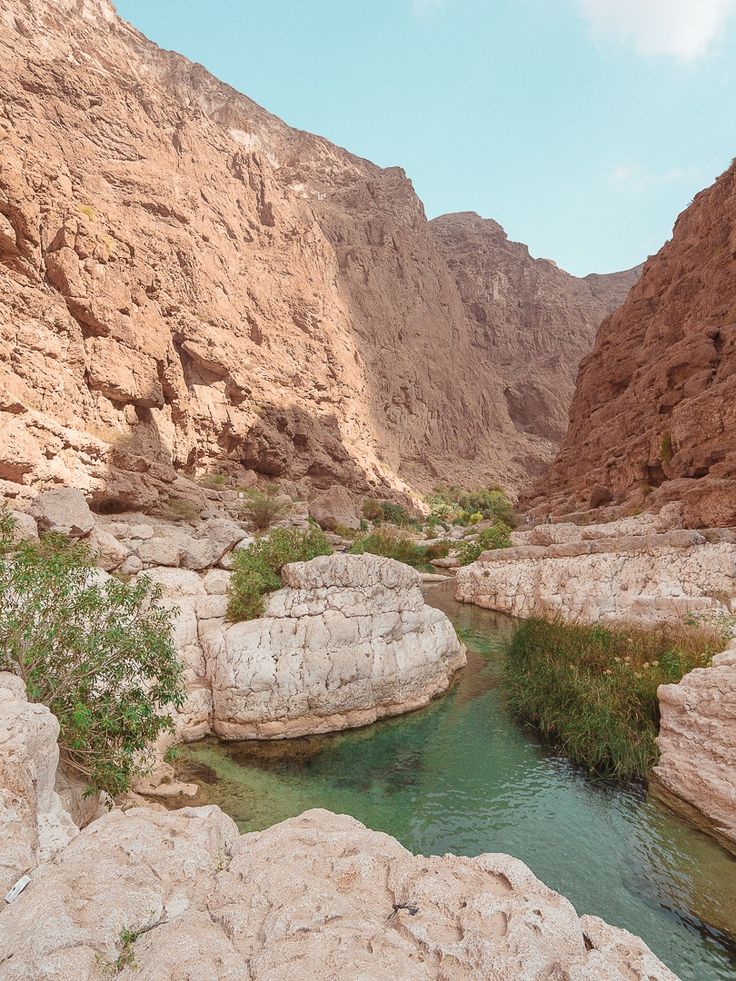Hidden Gems of the Middle East Every Global Traveler Should Explore
The Middle East often conjures images of towering skylines, desert safaris, and ancient ruins—and while those are certainly part of...

The Middle East often conjures images of towering skylines, desert safaris, and ancient ruins—and while those are certainly part of its charm, there’s a whole side to this region that many travelers overlook. Beyond the well-trodden paths lie cities steeped in untouched heritage, tranquil beaches without crowds, and mountain villages where tradition thrives. For the modern globetrotter looking to move beyond the expected, the Middle East is full of quiet wonders waiting to be explored.
From Oman’s dramatic coastlines to Jordan’s forgotten castles, this guide will introduce you to some of the most remarkable hidden gems that offer not just beauty, but a deep sense of place and culture. Before diving in, travelers planning to visit countries like Oman should be aware of entry processes such as the Oman E Visa, which simplifies travel planning for most nationalities. Knowing this early can help you build a smoother itinerary around the region.
1. Salalah, Oman – The Arabian Tropics
While Muscat often gets the spotlight, Salalah in southern Oman is an underrated treasure. Known for its lush landscapes, especially during the Khareef (monsoon) season, Salalah feels like a different world altogether. Waterfalls, banana plantations, and misty hills replace the dry terrain most associate with the Gulf.
One of the region’s best-kept secrets is the nearby Al Mughsail Beach, with dramatic cliffs and blowholes that put on a show during high tide. The ancient frankincense trail also starts here, making it a cultural landmark as much as a natural one. If you’re heading to this part of Oman, it’s wise to organize your documentation in advance—whether through the Oman E Visa system or local travel support services.
2. AlUla, Saudi Arabia – The Desert’s Open-Air Museum
Once a key stop on the incense trade route, AlUla is Saudi Arabia’s rising star. Home to Hegra, a UNESCO World Heritage Site, this ancient city rivals Petra in Jordan but without the large tourist crowds. Towering sandstone tombs, centuries-old inscriptions, and rock formations dot the landscape, creating a surreal atmosphere that feels frozen in time.
Saudi Arabia is opening its doors more to global tourism, and AlUla serves as a shining example of how the country is preserving its heritage while inviting the world in. The best time to visit is during the cooler months, from November to March, when cultural festivals and stargazing events bring the desert to life.
3. Musandam Peninsula, Oman – Fjords Without the Flights to Norway
Tucked between the UAE and northern Oman lies the Musandam Peninsula, a breathtaking coastal enclave often called the “Norway of Arabia.” Dramatic cliffs plunge into crystal-clear waters, forming fjord-like inlets perfect for dhow cruises, snorkeling, and kayaking.
This region is ideal for travelers who want solitude without sacrificing natural beauty. Villages here are often only accessible by boat, which adds to the feeling of remoteness. To reach Musandam, travelers typically pass through UAE borders, so it’s crucial to ensure all entry permits are handled ahead of time. If your journey includes stopping in the capital, knowing how to Apply Muscat Visa procedures can make transitions between regions seamless.
4. Qadisha Valley, Lebanon – Spiritual Serenity and Mountain Culture
Lebanon’s Qadisha Valley offers a peaceful escape with its deep gorges, ancient monasteries, and scenic trails. Carved by the Qadisha River and surrounded by the towering Cedars of God, this UNESCO-listed site is a spiritual haven that has hosted hermits, monks, and mystics for centuries.
Hiking through the valley is like walking through a timeline of Middle Eastern religious history. While Lebanon may not always be top-of-mind for travelers due to past political instability, regions like Qadisha remain remarkably untouched and welcoming, especially to those who venture beyond Beirut.
Next on Your List:Top Travel Destinations That Are More Accessible
5. Siwa Oasis, Egypt – A World Away from the Nile
Far from the bustling streets of Cairo and the grandeur of the pyramids lies Siwa, a remote oasis in Egypt’s western desert. Known for its unique Berber culture, salt lakes, and the ruins of the Oracle Temple of Amun (where Alexander the Great was said to be declared divine), Siwa is where history and nature intersect.
Eco-lodges and salt-built architecture make the experience here truly immersive. The locals still speak Siwi, a Berber dialect, and maintain many traditional ways of life. For adventure lovers, desert safaris and sandboarding in the Great Sand Sea are unforgettable experiences.
6. The Dana Biosphere Reserve, Jordan – Eco-Tourism’s Hidden Frontier
Jordan is famous for Petra and Wadi Rum, but few know about the Dana Biosphere Reserve—Jordan’s largest nature reserve and a sanctuary for rare wildlife and plant species. The village of Dana itself is perched above a deep canyon and offers a rare glimpse into Jordanian rural life.
Travelers can explore dramatic landscapes ranging from oak forests to rocky deserts, and stay in eco-lodges that contribute to conservation efforts. This destination is ideal for those who love hiking, birdwatching, or simply enjoying nature with fewer tourists around.
7. Kish Island, Iran – Island Life in the Persian Gulf
Located off the southern coast of Iran, Kish Island is a free trade zone, which means many travelers can enter visa-free or with minimal paperwork. Known for its relaxed atmosphere, clean beaches, and coral reefs, Kish is unlike most of the mainland. You’ll find a blend of modern resorts and historical sites like the Greek Shipwreck and Harireh Ancient City.
This destination is growing in popularity among regional travelers, and its easy access makes it a perfect addition to a Gulf itinerary. While Iran’s visa policies differ from Oman’s, the convenience of travel within the region highlights why advance planning—such as learning how to Apply Muscat Visa for certain entry points—matters when hopping between Gulf countries.
In Case You Missed It:A Cultural Journey Through the Middle East
Travel Smart: Tips for Visiting Middle Eastern Hidden Gems
- Check entry requirements early: Many countries now offer digital visa options that simplify travel—some within a few days.
- Respect local customs: Dress modestly, especially in conservative regions, and always ask before photographing people.
- Travel during shoulder seasons: Spring and autumn offer cooler weather, fewer tourists, and better deals.
- Go off the beaten path with a guide: Hiring local guides can help you access remote areas and provide cultural context.
Final Thoughts
The Middle East is more than a destination; it’s a region of stories—both ancient and living. By stepping beyond the popular attractions and exploring these hidden gems, you’ll gain a deeper understanding of the cultures, landscapes, and histories that shape this remarkable part of the world. Whether you’re wandering through the misty hills of Salalah or cruising the fjords of Musandam, one thing is certain: the Middle East rewards the curious traveler.
Just remember to prepare for your journey by sorting out details like the Oman E Visa or checking how to Apply Muscat Visa depending on your entry point. With the right planning, you’ll be free to enjoy the adventure that awaits.







